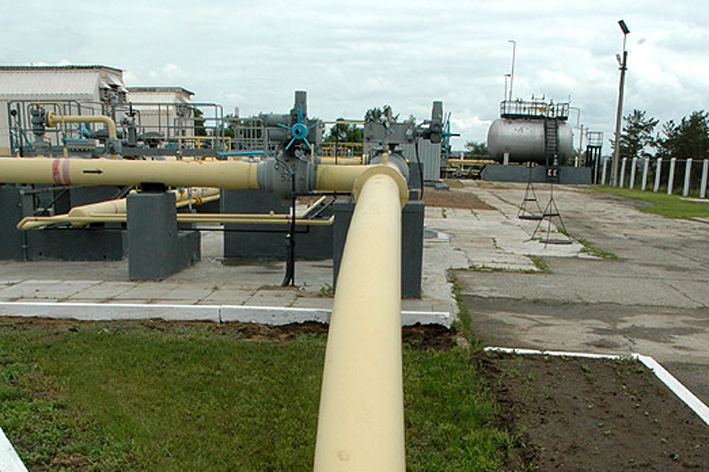By Jeffrey Halley
The Ukraine/Russia conflict has suffered some headline fatigue of late, and more than a little complacency by the world’s financial markets, as China’s slowdown fears grabbed centre-stage.
The economic ripples of the Ukraine conflict are back on the front pages. Equity markets overnight took fright at ominous comments from Russian officials around nuclear war, but it was Moscow’s announcement that Poland and Bulgaria would have their natural gas supplies cut off, unless they paid for them in roubles, that jarred market nerves.
It seems that the weaponisation of its energy supplies by Russia has now begun, possibly driven by previously reluctant members of NATO getting on board and supplying heavy weapons to Ukraine.
Germany has stated it could painfully manage if Russia banned energy exports. Poland has said its gas storage is at 80%, but Bulgaria gets near 90% of its gas supplies from Russia, and its only oil refinery is owned by a Russian company.
If this is just the start of further energy escalation by Russia, the European Union faces challenging times ahead.
That explains why oil prices reversed their losses from Monday and didn’t shoot into space.
Russia’s natural gas aside, markets swung back into full risk-aversion mode overnight.
US yields fell, suggesting investors were heading for shelter in that space.
The US Dollar soared, with the Euro and the risk-sentiment-correlated Australasian currencies coming in for negative attention. EUR/USD has broken its 1985 trendline support and if Russia decides to play its gas supply card, a move below parity is on the cards.
Nasdaq led the market wipe-out overnight, with its near 4.0% retreat led by Tesla, which fell by 12.20%. Either Elon Musk sold his latest stock awards to generate the $21 billion in cash for his part of the Twitter buyout, or the Street is starting to wonder how he could effectively run Tesla, Starlink, Space-X and Twitter simultaneously.
The mood will remain dark thanks to after-market Q1 results announcements by Microsoft and Alphabet.
Microsoft produced an on-expectation set of results, led by the Azure Cloud division, and maintained an upbeat macroeconomic outlook. Alphabet, unfortunately, missed forecasts, thanks to a deceleration in YouTube revenues.
Alphabet’s results will increase nerves about the outlook for the tech heavyweights announcing this week. Meta announces Wednesday night and if my recent user experience with them is anything to go by, there is downside risk again in their results.
Expect more hitting of the ‘dislike’ button by US equities if Meta disappoints once again. It will fall to Apple and Amazon to stop the rot.
Solid US data
The overnight data dump from the US was solid, if not spectacular.
Durable Goods rose in March, recovering from their Ukraine slump in February. The house price indexes booked another month of gains in February, while CB Consumer Confidence remained high at 107.30 and the Richmond Fed Manufacturing Index for April was steady at 107.30.
The only blot was slowing New Home Sales, which rose by 763,000 in March, versus 835,000 in February, as rising mortgage rates bite.
There was nothing to suggest an impending slowdown or jarred nerves around impending Fed hikes.
In Asia, South Korean Consumer Confidence held steady Wednesday at 103.80 and China Industrial Products YTD (YOY) rose by a higher than expected 8.50%. That has steadied the ship in Mainland China equity markets as the rest of Asia heads to the exit door.
The big surprise has been Australian Inflation, which hit 5.10% YOY for Q1, well above the 4.60% rise expected.
For the rest of the day, with the Fed in a pre-meeting blackout, markets will probably remain in risk aversion mode, fearful of expanding energy weaponisation by Russia, and more Covid-zero policy-related bad news from China.
China bright spot
In Asia, the giant falls overnight in US markets proved irresistible to bargain hunters. US futures edged higher, S&P futures added 0.45%, Nasdaq futures 0.50%, and Dow futures 0.70%. The price action looks optimistically corrective in nature.
In Asia, China is the one bright spot as markets have risen in response to a slow day for Covid-zero headlines, and better than expected Industrial Profits data.
In a rerun of Tuesday, the Shanghai Composite rose by 0.40% with the narrower Shanghai 50 gaining 1.25%. The CSI 300 rallied by 1.13%, but tellingly, Hong Kong’s Hang Seng edged 0.10% higher.
Nothing has materially changed with China’s situation and the rallies should be treated with caution.
Oil trades sideways
Oil markets reversed their losses from Monday overnight, rising after Russia announced natural gas export bans on Poland and Bulgaria unless they paid in roubles.
Brent crude rose by 2.85% to $105.40, and WTI rallied by 3.10% to 101.60 a barrel. In Asia both contracts booked 1% gains in early trading, but have since given all of those back to be almost unchanged from the New York close.
I continue to expect that Brent will remain in a choppy $100.00 to $120.00 range, with WTI in a $95.00 to $115.00 range.
Gold ponders next move
Gold managed to gain some risk aversion support overnight, shrugging off a much stronger US Dollar to post a modest 0.40% gain to $1904.50 an ounce.
In Asia, upward momentum quickly subsided, gold reversing 0.35% lower to $1898.50.
Has gold’s correction lower run its course, and are we approaching levels to buy, given an escalation in geopolitical risks?
The price action suggests not, as gold rallied modestly overnight and quickly gave back those gains on Wednesday. It remains anchored at the bottom of this week’s range. Gold has support at $1891.50 and $1880.00. Failure of $1880.00 signals a capitulation trade targeting triangle support at $1835.00, and then $1800.00.
On the topside, gold has resistance at $1915.00, $1940.00, $1980.00, and $2000.00.
Jeffrey Halley is Senior Market Analyst, Asia Pacific at OANDA
Opinions are the author’s, not necessarily that of OANDA Global Corporation or any of its affiliates, subsidiaries, officers or directors. Leveraged trading is high risk and not suitable for all. Losses can exceed investments.








